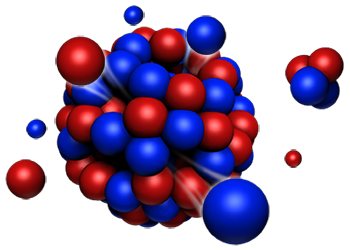Speaker
Description
The ESS Target Station is designed to convert the 2 GeV protons to a high flux of low energy neutrons for scientific research, at 5 MW beam power. It will start receiving proton beam from the linac for neutron production in 2022. Upon commissioning “beam-on-target,” the linac will deliver protons at 571 MeV, which is lower than the nominal value 2 GeV. For the first 5 years after the beam commissioning, the proton energy and beam power will be ramped up continuously towards 1.3 GeV and 3 MW, with sequential commissioning of super conducting cryomodules during long shut down periods. During neutron production, the spallation target, proton beam window, multi-wire beam profile monitor and moderators are exposed to intense flux of primary and secondary particles, suffering from radiation induced structural degradation. The service lifetimes of these components are limited mainly by the displacement damage, gas production rate, and solid transmutations, where the extent of the radiation damage depends on the kinetic energy of the impinging protons. To secure availability and reliability of the neutron production during this ramp-up phase, the proton energy dependent radiation damage rates in the core target components have to be assessed and the dose-limited lifetime be defined for the timely maintenance of the affected systems. In this paper, we present the lifetime criteria of core functional components in ESS target environments, during the proton energy ramp-up phase.

